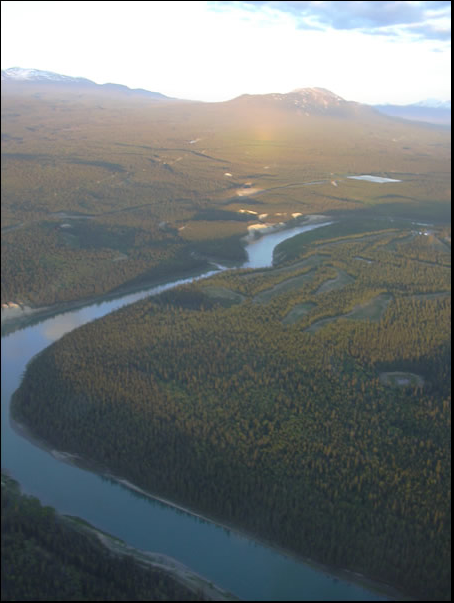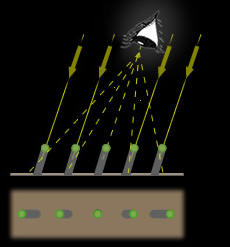Yukon Opposition Glow
The Fascinating Phenomenon of Yukon Opposition Glow
When gazing at the sky during a sunset in the Yukon, one might be captivated by a stunning atmospheric optics phenomenon known as the Yukon Opposition Glow. This mesmerizing effect occurs approximately 30 minutes before sunset and presents a remarkable contrast situation with low light levels. The brightness of the opposition glow is particularly impressive, drawing attention to the antisolar point (ASP), which is directly opposite the position of the sun.
At the heart of this captivating display lies the opposition effect. This effect manifests as a bright patch at the ASP, and it can be attributed to a combination of factors. One significant contributing factor is shadow hiding, wherein the shadows of trees that lie directly opposite the sun become concealed by the trees themselves. As one moves away from the ASP, these shadows gradually become more visible, appearing closer to the ASP than the objects casting them. The absence of shadows at the ASP creates an illusion of heightened brightness compared to the surrounding area.
Notably, the lack of bluish sky-lit shadows also lends a distinct yellow hue to the opposition glow. This coloration further enhances its allure and sets it apart from its surroundings. However, there is much more to this phenomenon than meets the eye.
In addition to shadow hiding, retro-reflection from minerals can contribute to the luminosity of the ASP. Minerals present in the environment have the potential to reflect light back towards its source, resulting in a brighter appearance at the ASP. This interplay between light and minerals adds an extra layer of complexity to the already enchanting Yukon Opposition Glow.
Moreover, an interference effect known as coherent backscattering also plays a role in shaping this atmospheric spectacle. Coherent backscattering occurs when light waves interact with tiny particles suspended in the atmosphere. These particles scatter light in a way that causes it to be redirected back towards its original source. This redirection of light can intensify the opposition effect, heightening its brilliance and adding to the overall visual splendor.
To fully appreciate the intricacies of the Yukon Opposition Glow, it is essential to understand the scientific principles behind it. By delving into the physics of light scattering and shadow hiding, we can gain a deeper understanding of this captivating atmospheric phenomenon. Exploring the role of minerals and their reflective properties further enriches our knowledge of the intricate interplay between light and matter.
In conclusion, the Yukon Opposition Glow presents a breathtaking spectacle that enchants observers with its brightness and distinct yellow hue. Through a combination of shadow hiding, retro-reflection from minerals, and coherent backscattering, this atmospheric optics phenomenon creates a visual masterpiece in the sky. As we continue to explore the wonders of our natural world, phenomena like the Yukon Opposition Glow serve as a reminder of the extraordinary beauty that can be found right above our heads.

Opposition Glow by Russell Sampson shortly before landing at Whitehorse, Yukon in June '08. Image ©Russell Sampson, shown with permission.
"It was about 30 minutes before sunset and there was a great opposition effect in the distant pine trees. It was a rather extreme contrast situation with low light levels. Nonetheless I was impressed with the brightness of the effect."
The opposition effect is a bright patch at the antisolar point (ASP) directly opposite the sun. In this case part of the effect is caused by shadow hiding. The shadows of the trees directly opposite the sun are hidden by the trees themselves. Away from the ASP the shadows become increasingly visible (unhidden) and, counterintuitively, they appear closer to the ASP than the shadow casters. The lack of shadows at the ASP makes it appear brighter than the surrounding area. It also appears more yellow because it lacks bluish sky lit shadows.
That's not the whole story, retro-reflection from minerals sometimes brightens the ASP and there is also an interference effect - coherent backscattering.

Note: this article has been automatically converted from the old site and may not appear as intended. You can find the original article here.
Reference Atmospheric Optics
If you use any of the definitions, information, or data presented on Atmospheric Optics, please copy the link or reference below to properly credit us as the reference source. Thank you!
-
<a href="https://atoptics.co.uk/blog/yukon-opposition-glow/">Yukon Opposition Glow</a>
-
"Yukon Opposition Glow". Atmospheric Optics. Accessed on April 20, 2024. https://atoptics.co.uk/blog/yukon-opposition-glow/.
-
"Yukon Opposition Glow". Atmospheric Optics, https://atoptics.co.uk/blog/yukon-opposition-glow/. Accessed 20 April, 2024
-
Yukon Opposition Glow. Atmospheric Optics. Retrieved from https://atoptics.co.uk/blog/yukon-opposition-glow/.